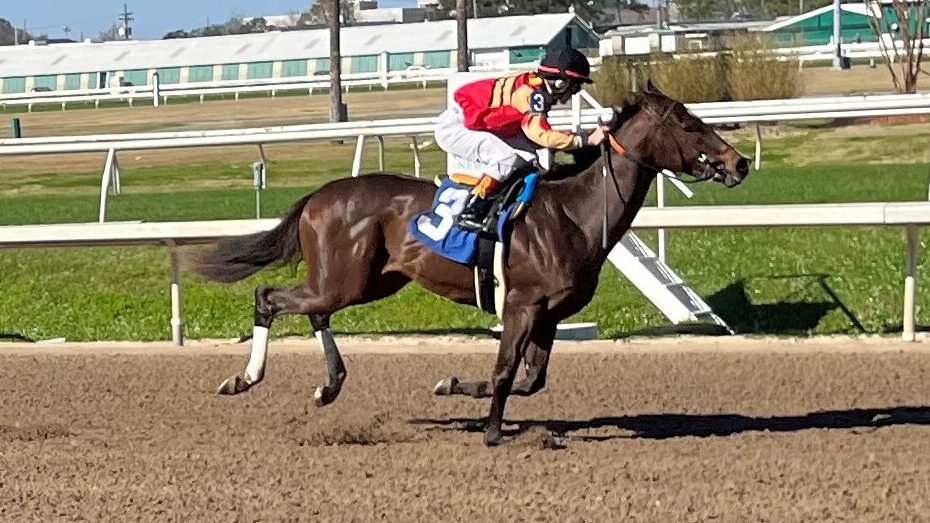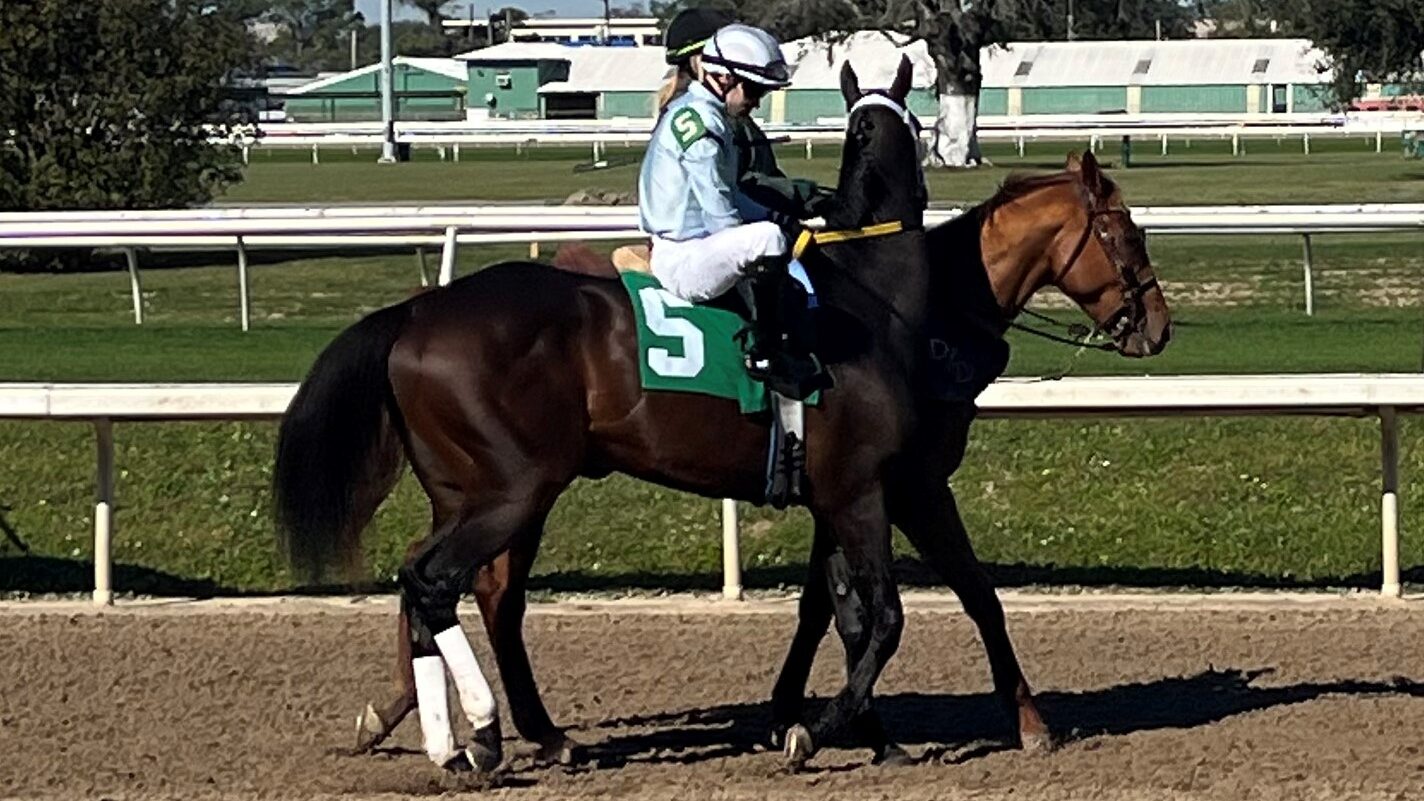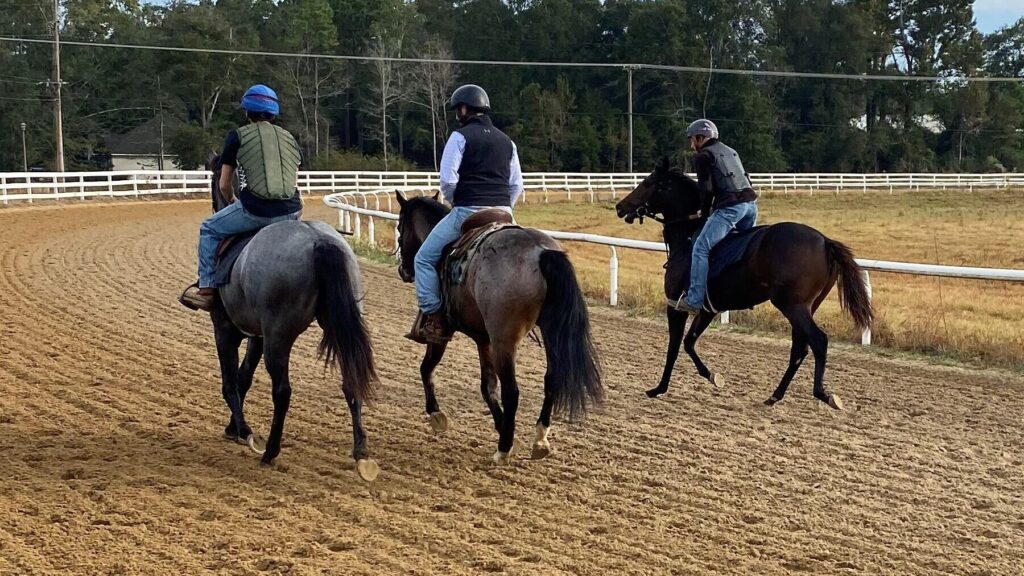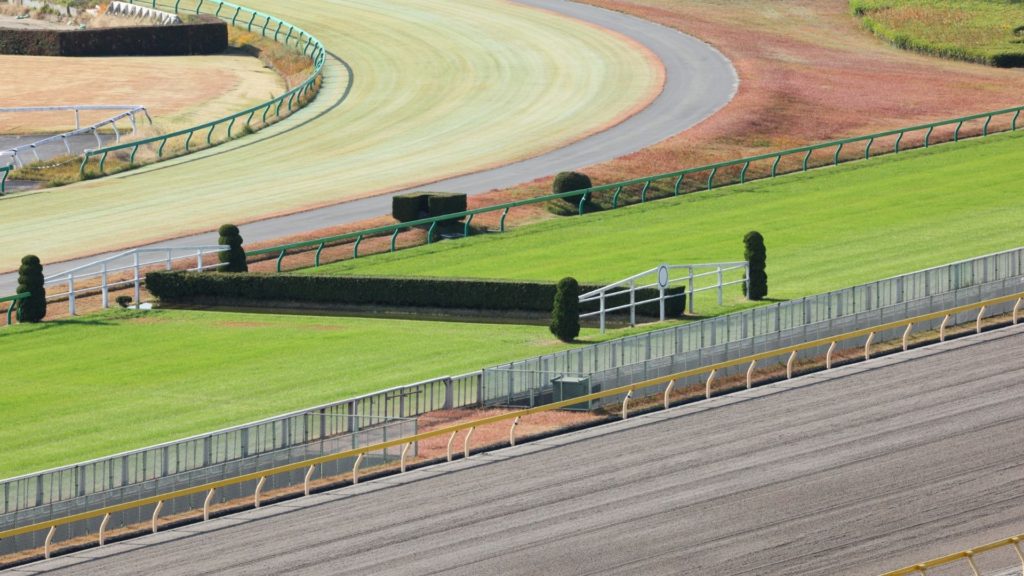Last updated: June 28, 2025
My horse, Ashton, struggled in his first few races, and I was on the verge of giving up on him. When I thought there was no hope left, his trainer suggested we try running him on turf instead of the usual dirt surface. To my astonishment, Ashton not only held his own but won the race against some tough competition.
This unexpected turn of events piqued my curiosity about the impact of racetrack surfaces on a horse’s performance. I realized there was much more to consider than just a horse’s pedigree or training regimen. The surface they run on could be the key to unlocking their true potential.
In this blog post, we’ll delve into the world of racetrack surfaces and their effects on racehorse performance. We’ll explore various surface types, discuss how they can impact a horse’s abilities, and touch on the importance of injury prevention and training adjustments. Join me as we uncover the crucial role that racetrack surfaces play in the thrilling world of horse racing.
Common Types of Racetrack Surfaces

As a horse racing enthusiast, you’ve probably watched races on different types of racetrack surfaces and wondered how each one affects the horses’ performance. In this section, we’ll explore the three most common racetrack surfaces: dirt, turf, and synthetic.
Each surface has its unique characteristics, as well as advantages and disadvantages. Understanding these differences can help us make better decisions when it comes to training, racing, and even betting on these beloved equine athletes. So, let’s dive in and uncover the world of racetrack surfaces and how they play a crucial role in the exciting world of horse racing.
A. Dirt
As we venture into the world of racetrack surfaces, let’s begin with the most traditional and widely used surface: dirt. Familiar with racegoers around the world, dirt tracks have been a staple of horse racing for centuries.
- Characteristics and composition: Dirt tracks are the most traditional type of racetrack surface. They’re made of a mixture of sand, silt, and clay, with the ratio varying based on regional preferences. The composition of dirt tracks helps provide traction and cushioning for the horses.
- Advantages and disadvantages: Dirt surfaces are relatively inexpensive to maintain and offer good traction for horses. However, they can be inconsistent due to weather conditions, which may lead to higher injury risks. Additionally, dirt tracks tend to favor horses with early speed, potentially creating an uneven playing field.
B. Turf
As we continue our journey exploring racetrack surfaces, let’s turn our attention to a surface that’s prevalent in European racing and steadily gaining popularity in the United States: turf. Turf tracks, with their lush grass surfaces, offer a distinct racing experience compared to their dirt counterparts.
- Characteristics and composition: Turf tracks, commonly found in Europe and gaining popularity in the US, consist of natural grass surfaces. These tracks offer a softer, more forgiving surface for horses, which can vary in composition depending on the grass species used.
- Advantages and disadvantages: Turf courses provide a more natural environment for horses and can be gentler on their legs, potentially reducing injury risks. However, they require more maintenance, and their performance can be significantly impacted by weather conditions, like heavy rain or drought.
C. Synthetic
Now that we’ve explored the more traditional racetrack surfaces, it’s time to enter the future with synthetic tracks. As a modern innovation in horse racing, these tracks have been designed to provide a more consistent and safer racing experience.
- Characteristics and composition: Synthetic tracks are a relatively modern addition to horse racing, made from a mixture of materials like sand, wax, rubber, and fibers. The goal is to create a uniform, all-weather surface that is more predictable and consistent than dirt or turf.
- Advantages and disadvantages: Synthetic tracks offer improved consistency, regardless of weather conditions, and are associated with a reduced risk of injury due to their shock-absorbing properties. However, they can be more expensive to install and maintain, and some horses may not perform as well on synthetic surfaces as they do on traditional dirt or turf tracks.

Factors Affecting Racehorse Performance on Different Surfaces
It’s essential to understand the various factors that can affect a racehorse’s performance on different surfaces. Each horse is unique, and the racetrack surface is just one piece of the complex puzzle that determines a horse’s success on the track.
In this section, we explore the physical, environmental, and horse-specific factors that come into play when a racehorse takes to the track. By gaining a comprehensive understanding of these factors, we can make more informed decisions when it comes to training, racing, and selecting the right surface for our equine athletes.
A. Physical factors
The traction, grip, impact absorption, and energy return properties of a surface can have a significant impact on a horse’s ability to perform at its best. In this section, we’ll look at these crucial physical factors and examine how they contribute to the performance of our equine athletes. Understanding these elements will help us appreciate the nuances of each racetrack surface.
- Traction and grip: One key factor that influences a racehorse’s performance is the traction and grip provided by the racetrack surface. A surface with good traction allows horses to maintain their footing while sufficient grip helps them propel forward with ease. Dirt tracks typically provide solid traction, while turf and synthetic surfaces may offer varying degrees of grip depending on their composition and maintenance.
- Impact absorption and energy return: Another crucial factor is the surface’s ability to absorb impact and return energy to the horse. A surface that absorbs impact well can reduce stress on a racehorse’s legs, while efficient energy return contributes to a horse’s speed and stride. Synthetic tracks are known for their shock-absorbing properties, whereas dirt and turf surfaces can vary in their impact absorption and energy return capabilities.
B. Environmental factors
Moving forward in our exploration of factors influencing racehorse performance, we’ll now turn our attention to the environmental factors that can affect a racetrack surface. Weather conditions and maintenance practices play a vital role in shaping the characteristics of a racing surface, which in turn impacts the performance of the horses competing on it.
- Weather conditions: Weather can significantly affect a racetrack surface, altering its performance characteristics. For example, heavy rain can turn a dirt track into a muddy, slippery mess, while turf tracks may become soft and uneven. Synthetic surfaces, on the other hand, are designed to be more resilient to weather changes, offering greater consistency in various conditions.
- Maintenance and consistency: The quality of a racetrack surface can be influenced by its maintenance and consistency. Regular upkeep, such as harrowing and watering, ensures that a track remains safe and even. A well-maintained surface allows horses to perform more consistently, while poor maintenance can lead to unpredictable results and increased injury risks.
C. Horse-specific factors
As we further investigate the factors affecting racehorse performance on different surfaces, it’s important to acknowledge the unique attributes of the horses themselves. Individual horses, with their distinct conformation, biomechanics, breed, and personal preferences, can respond differently to various racetrack surfaces.
- Conformation and biomechanics: A horse’s physical attributes, such as its conformation and biomechanics, can play a significant role in determining how well it performs on different surfaces. For instance, a horse with a long, sweeping stride might excel on a turf track, while a compact, powerful horse could be better suited to the demands of a dirt track.
- Breed and individual preferences: Finally, a horse’s breed and individual preferences can influence its performance on various racetrack surfaces. Some breeds, like Thoroughbreds, are versatile and perform well on multiple surfaces, while others may have a strong affinity for a particular surface type. Additionally, individual horses may show a preference for certain surfaces based on their own unique characteristics and experiences.

Injury Risks and Prevention
It’s vital not to overlook the potential injury risks associated with each surface type. Ensuring the safety of our equine athletes is of utmost importance. In this section, we’ll discuss common injuries related to racetrack surfaces, surface-specific injury risks, and the methods that can be employed to minimize these risks.
Common injuries related to racetrack surfaces:
Racetrack surfaces can contribute to various injuries in racehorses, with some of the most common being suspensory ligament injuries, tendon strains, stress fractures, and joint-related issues. These injuries can result from excessive stress on a horse’s legs or from running on inconsistent or poorly maintained surfaces.
Surface-specific injury risks
Each type of racetrack surface carries its own unique injury risks. Dirt tracks, for example, can be hard on a racehorse’s legs, potentially causing increased wear and tear on joints and tendons.
Turf tracks, though generally gentler, can become slippery and unpredictable when wet, increasing the risk of falls and injuries. Synthetic tracks, while designed to minimize injury risks, may still pose challenges for horses not accustomed to their unique feel and response.
Methods to minimize injury risks:
As we strive to protect our equine athletes from injury risks associated with different racetrack surfaces, it’s essential to explore the methods that can help minimize these risks. In this section, we look at the importance of properly maintaining racetrack surfaces and how adapting training techniques to suit different surfaces can contribute to injury prevention.
- Proper maintenance of racetrack surfaces: Regular and thorough maintenance of racetrack surfaces is critical in preventing injuries. This includes harrowing and watering dirt tracks, aerating and mowing turf tracks, and grooming synthetic surfaces to ensure consistency and optimal performance. Well-maintained surfaces provide a safer environment for horses, reducing the risk of injury during training and racing.
- Adapting training techniques to different surfaces: Another key to injury prevention is tailoring training techniques to the specific surface a horse will be racing on. This may include adjusting workout intensity, duration, or frequency based on the surface’s characteristics, as well as gradually introducing a horse to a new surface to help them acclimate. By adapting training methods to suit each racetrack surface, trainers can better prepare horses for competition and minimize the risk of injury.

Adapting Racehorse Training and Selection to Surface Types
Trainers play a critical role in preparing horses for racing on different surfaces. Their expertise in understanding each horse’s unique strengths and preferences helps them tailor training programs to suit the specific surface type.
This includes adjusting workout intensity, frequency, and duration, as well as gradually introducing horses to new surfaces to ensure optimal performance and minimize injury risks.
Identifying surface preferences in individual horses
Every horse is unique, and some may prefer a specific surface type. Identifying these preferences is crucial in optimizing a horse’s performance. Trainers and owners can observe a horse’s performance during training and racing, as well as consider factors like pedigree, conformation, and biomechanics, to determine a horse’s potential affinity for a particular racetrack surface.
Strategies for optimizing performance on different surfaces
To optimize a racehorse’s performance on various surfaces, trainers, and owners can employ several strategies, such as:
- Carefully selecting races that suit a horse’s surface preference.
- Adapting training techniques and equipment to accommodate the specific surface type.
- Monitoring and adjusting a horse’s workload ensures they remain in peak physical condition for racing on different surfaces.
- Collaborating with veterinarians and equine specialists to address any surface-related issues that may arise.
By implementing these strategies, trainers and owners can help their racehorses reach their full potential, regardless of the racetrack surface they compete on.

The Future of Racetrack Surfaces and Horse Racing
As we look ahead to the future of racetrack surfaces and horse racing, technological advancements will likely play a significant role in developing new surface materials. Researchers and industry experts continuously work on improving existing surfaces and exploring innovative materials that can enhance performance, minimize injury risks, and promote sustainability.
Impact on performance and injury rates
The future of racetrack surfaces may bring about positive changes in performance and injury rates. As new materials and technologies are developed, we can expect more consistent and safer surfaces that could lead to improved performance and reduced injury rates among racehorses. These advances will not only benefit equine athletes but also contribute to the overall success and growth of the horse racing industry.
Ethical considerations and animal welfare
In the evolving world of racetrack surfaces, ethical considerations and animal welfare will remain at the forefront of discussions and decision-making processes. As we develop new materials and improve existing surfaces, it’s essential to prioritize the well-being of equine athletes and ensure that advancements align with ethical principles.
By focusing on animal welfare and ethical considerations, the future of racetrack surfaces and horse racing can continue to thrive while prioritizing the safety and well-being of the horses at the heart of the sport.
Conclusion
The impact of racetrack surfaces on racehorse performance is a multifaceted topic encompassing various factors, including physical, environmental, and horse-specific elements. As we’ve explored throughout this article, understanding the characteristics and implications of different racetrack surfaces is crucial in optimizing performance, minimizing injury risks, and ensuring the welfare of our equine athletes.
The future of racetrack surfaces and horse racing looks promising, with technological advancements and ethical considerations driving the development of safer and more efficient surfaces. By embracing these innovations and prioritizing the well-being of our horses, we can continue to enjoy the thrilling world of horse racing while supporting the remarkable athletes that captivate and inspire us.

About the Author: Miles Henry
Lifelong Horseman | Racehorse Owner | Published Author
Miles Henry brings over 25 years of hands-on experience training and owning Thoroughbred racehorses. Raised with Quarter Horses and Appaloosas, he’s spent a lifetime learning from horses—on the track, in the barn, and in the field. Today, he runs a small but successful racing stable in Louisiana and shares real-world insights on HorseRacingSense.com, helping horse owners, fans, and bettors navigate the sport with confidence.
📚 Books: View Miles’s books on Amazon »
🎧 Podcast Guest: Animal Tales Ep. 32 |
YouTube Interview
📩 Newsletter: Sign up for racing tips and horse care advice »
🔗 Follow Miles:
Twitter |
Facebook |
YouTube

